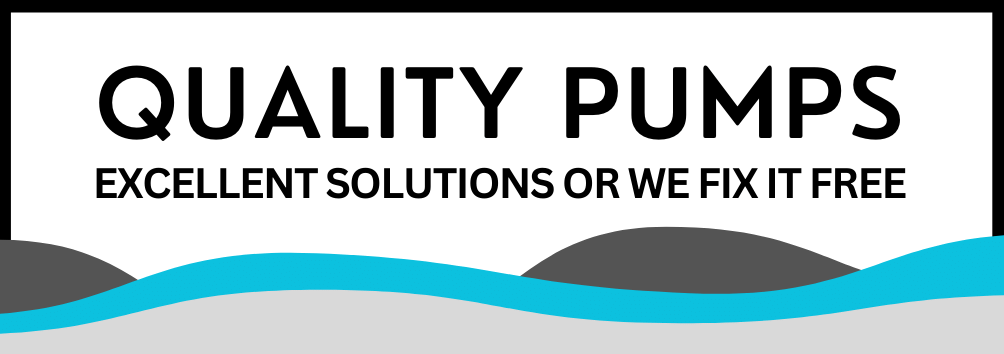Why Regular Maintenance Is Important for Submersible Pumps in Pump Stations, and What Steps You Should Take to Maintain Yours
In the world of pump stations, submersible pumps play a pivotal role in ensuring the smooth operation of water and wastewater management systems. These pumps, designed to operate while submerged, face unique challenges and require regular maintenance to perform at their best. This article delves into why regular maintenance is beneficial and essential for submersible pumps and outlines practical steps to maintain your pump station.
The Importance of Regular Maintenance for Submersible Pumps
Submersible pumps, the workhorses of pump stations, are crucial for the continuous flow of water or wastewater. Without them, the risk of flooding, equipment failure, and environmental contamination increases significantly. Regular maintenance is the key to preventing such dire consequences and ensuring the longevity and efficiency of these pumps.
Key Benefits of Maintaining Submersible Pumps
Extended Equipment Life: Regular maintenance can significantly extend the lifespan of submersible pumps, delaying the need for costly replacements.
Increased Efficiency and Performance: Clean and well-maintained pumps operate more efficiently, saving energy and reducing operational costs.
Cost Savings and Reduced Downtime: Preventative maintenance helps avoid unexpected breakdowns, minimizing downtime and associated costs.
Safety and Environmental Protection: Well-maintained pumps are less likely to fail, cause environmental damage, or pose safety risks to maintenance personnel.
Common Issues with Submersible Pumps
Several common issues can affect submersible pumps:
Wear and Tear: Continuous operation can lead to the deterioration of pump components.
Clogging and Blockage: Debris and waste can clog the pump, hindering its efficiency.
Electrical Failures: Water infiltration or moisture can cause electrical components to fail.
Corrosion and Material Degradation: The harsh operational environment can lead to corrosion and material breakdown.
Maintenance Strategies for Submersible Pumps
To keep submersible pumps in top condition, consider the following maintenance strategies:
Regular Inspection and Monitoring: Conduct periodic inspections to identify and address issues early.
Cleaning and De-clogging: Regularly clean the pump and its components to prevent blockages.
Wear and Tear Repairs: Replace worn-out parts promptly to maintain pump efficiency.
Electrical System Checks: Ensure electrical connections are dry and secure to prevent failures.
Lubrication and Sealing: Properly lubricate moving parts and check seals to prevent leaks and water ingress.
Implementing a Maintenance Schedule
A well-planned maintenance schedule is crucial:
Planning and Documentation: Create a detailed maintenance plan and keep records of all inspections and repairs.
Frequency of Maintenance Activities: Determine the optimal frequency of maintenance tasks based on pump usage and environment.
Training and Safety Measures: Ensure personnel are trained in maintenance procedures and safety practices.
Troubleshooting Common Problems
Being able to diagnose and fix common issues quickly can save time and prevent major failures:
Diagnosing and Fixing Common Issues: Familiarize yourself with the symptoms of common problems and how to address them.
When to Call a Professional: Know when an issue is beyond in-house repair capabilities and professional assistance is needed.
Regular maintenance of submersible pumps is essential for pump stations' efficient and safe operation. By understanding the importance of maintenance, recognizing common issues, and implementing a comprehensive maintenance strategy, you can ensure your submersible pumps continue to operate effectively, safeguarding your investment and the environment.
-
The frequency of maintenance for submersible pumps depends on their usage and the environment in which they operate. For heavily used pumps in challenging environments (like those handling wastewater or in industrial settings), inspections and maintenance might be needed quarterly or bi-annually. For less demanding applications, an annual check might suffice. Always refer to the manufacturer's guidelines for specific recommendations.
-
Minor repairs and routine maintenance can often be handled in-house by trained personnel, especially if they are familiar with the pumps' operational mechanics. However, for complex issues, such as deep internal repairs, electrical faults, or when specialized diagnostic equipment is needed, it's advisable to seek professional help. This ensures the pump is correctly repaired and maintains its operational integrity.
-
Signs that a submersible pump requires maintenance include decreased flow rate or water pressure, unusual noises (grinding or humming), frequent tripping of the circuit breaker, visible wear or corrosion, and water not being pumped at all. Any of these signs indicate that maintenance or repairs may be necessary.
-
Regular maintenance ensures that submersible pumps operate at their optimal efficiency. When pumps are clean, free from blockages, and in good repair, they require less energy to move water. This reduces power consumption and operational costs. Conversely, a poorly maintained pump has to work harder to achieve the same output, leading to higher energy use and costs.
-
Technological advancements impacting submersible pump maintenance include the use of smart sensors and IoT (Internet of Things) devices for real-time monitoring of pump conditions, predictive maintenance software that analyzes data to forecast potential failures, and advanced materials that reduce wear and extend pump life. These technologies can help in early problem detection and reduce downtime.
-
Environmentally friendly practices for maintaining submersible pumps include using biodegradable lubricants, recycling worn-out parts and materials whenever possible, implementing energy-efficient operation strategies, and choosing pumps and components that are designed with sustainable materials and technologies. Additionally, ensuring pumps are correctly sized and operated can minimize energy use and environmental impact.
